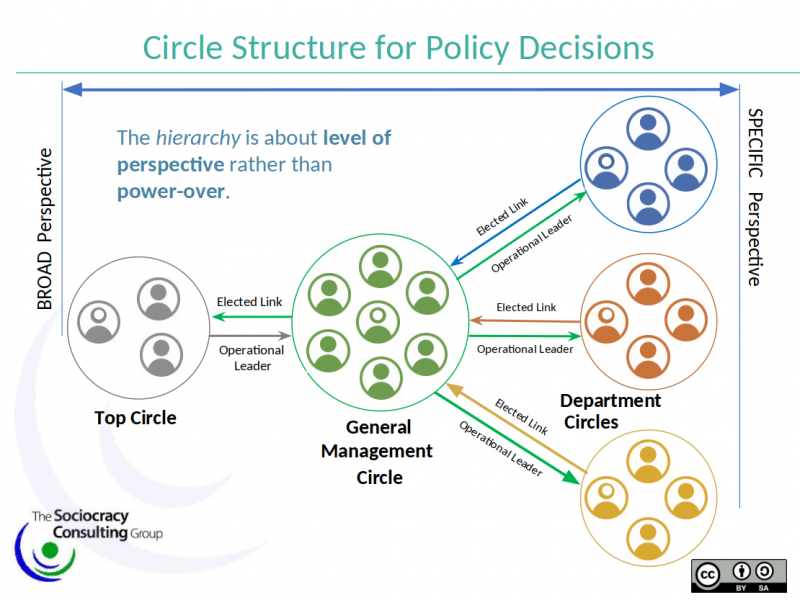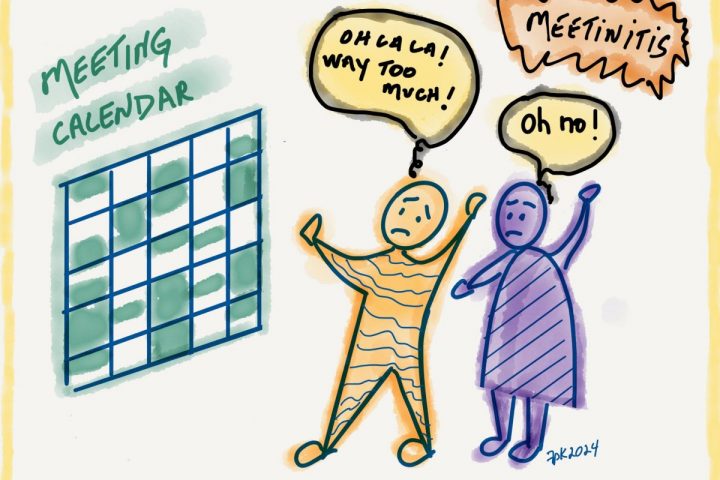
Unpacking Hierarchy
What is a hierarchy? If our first thought is “an organizational structure that gives some people power over others,” we’re only partly right. The word “hierarchy” has become, in some human organizational contexts, a pejorative term that focuses exclusively on “power-over” types of hierarchies. And, this is only part of the meaning of the word. If we dig no deeper than “power-over systems,” and from that label hierarchy as inherently “bad,” we lose the benefit of other meanings and applications of the word.
While most dictionary definitions focus on organizational power-over structures, some point to broader and more relevant aspects of the concept.
For example, vocabulary.com says “Hierarchy describes a system that organizes or ranks things, often according to power or importance.” Notice it says “often,” not “always.” Under specific definitions is this:
1. [noun] a series of ordered groupings of people or things within a system
An example given is:
“Taxonomy – a classification of organisms into groups based on similarities of structure or origin etc.”
None of ordering, grouping, or classifying necessarily involve power-over relationships.
If we look at Merriam-Webster, the narrative explanation includes this:
“Hierarchy has continued to spread its meaning…and today is commonly found used in reference to any one of a number of different forms of graded classification.”
Synonyms listed for hierarchy include arrangement, ordering, sequence, array, and situation – none of which inherently impose power-over relationships.
These definitions of “hierarchy” say it is about organizing, ordering, arranging, and classifying. Those activities may or may not involve creating power-over relationships.
In other words, hierarchies are one of our diverse conceptual tools, methods, and techniques for describing systems we observe or create. This includes, but is certainly not limited to, situations of “power-over” among humans.
Try and imagine any of these domains of human activity without hierarchies to order, organize, identify, or categorize information and relationships: architecture, philosophy, design, mathematics, computer science, organizational theory, systems theory, systematic biology, social sciences (especially political science).
In the scientific discipline of botany, for example, the concept of hierarchy is a valuable way to identify and organize form and structure in plants. These hierarchies do not make one plant, or part of a plant, better or more important or more powerful than another.
For a thorough exploration of diverse types, uses, and examples of hierarchies – most of which are not about power over other people – have a look at the ISKO Encyclopedia of Knowledge Organization entry for “hierarchy”:
https://www.isko.org/cyclo/hierarchy
“Hierarchy” is a lot like “power” – it is inherently neither good nor bad. Both simply exist, as concepts in our minds to which we correlate experiences in our living. What makes a difference is what we do with those concepts and those experiences.
Hierarchy In Sociocracy

There are hierarchies in sociocratic organizations. When someone claims sociocracy is “non-hierarchical,” they are referring to an absence of hierarchies that give some people power over other people without their consent. That is, the particular form of “hierarchy” that is assumed in most common usage of the word.
One important hierarchy in a sociocratic organization is the categorizing, or arranging, of work, from most specific to most general in scope. We can describe circle structure in sociocratic organizations as a hierarchy of work within the organization, from most general to most specific.
This does not mean that either the more specific or the more general work is more important – it is all important to the aims of the organization. Nor does it mean that either of more general or more specific work has more authority than the other. People doing more general work do not have power over those doing more specific work, and vice versa. It’s not about power-over, it’s about organizing work to be more effective at getting that work done.
In other words – as the graphic above shows – the hierarchy in an organization’s circle structure is one of level of perspective, rather than of power over other people.
Another form of hierarchy in sociocratic organizations is that of operational authority. For example a circle’s operational leader (“ops lead”) has authority – and responsibility – to manage the day-to-day work of the circle. This may include (gasp!) telling other circle members what to do and/or where, when, and how to do it.
It is crucial to understand that this authority is neither arbitrary nor unilateral. It is not arbitrary because any direction or guidance from, or further delegation by, the ops lead is based on policies made by all circle members, by consent, as peers. It is not unilateral because the ops lead was put in that role by consent of their peers, and can also be removed by them. In sociocratic organizations, we construct, by consent, various hierarchies of operational authority to support our effectiveness in realizing our aims. As with all policy decisions, these hierarchies get measured, evaluated, and re-constructed or de-constructed depending on the outcomes of our evaluations.
In a sociocratic organization, hierarchy is understood as one of a variety of tools available to us, used by consent where it can benefit our effectiveness towards our aims. If we fail to make this discernment, we fail to make best use of available options.
We must also avoid making hierarchy a scapegoat for other problems. For example, are we lacking (or avoiding) adequate transparency in our organization? Especially in conversations and policies around power, authority, even transparency itself? If we are, we may be projecting those challenges onto “hierarchy” as though hierarchy were something outside ourselves. As though we could avoid dealing with interpersonal power dynamics, with issues of authority and transparency, by blaming the consequences on “hierarchy.”
By reclaiming a fuller understanding of diverse types and applications of hierarchies, we can benefit from appropriate and generative uses of hierarchy within larger systems. We also improve our ability to discern those types of hierarchy that fail to serve our collective aims.
For support with effective use of consent-based hierarchies in your organization, contact us for a free consultation.
 John Schinnerer is a culture change agent and whole systems designer working with all aspects of human organizational systems, and a founding member of The Sociocracy Consulting Group.
John Schinnerer is a culture change agent and whole systems designer working with all aspects of human organizational systems, and a founding member of The Sociocracy Consulting Group.




